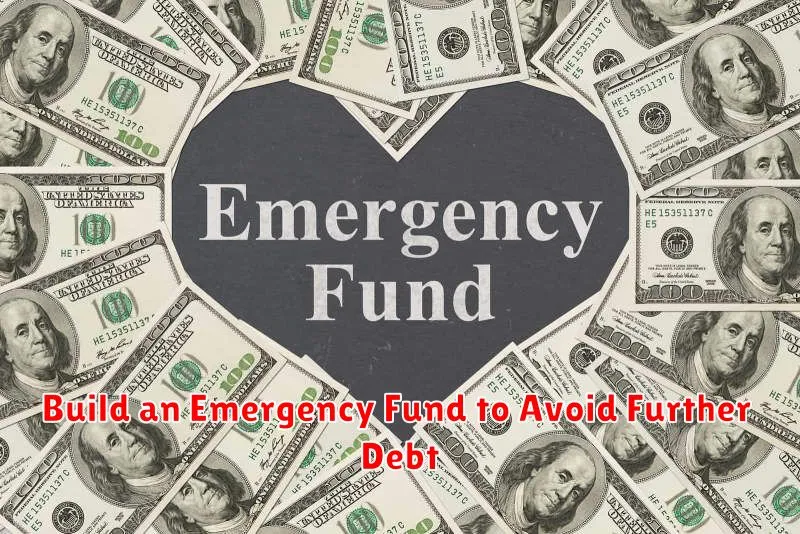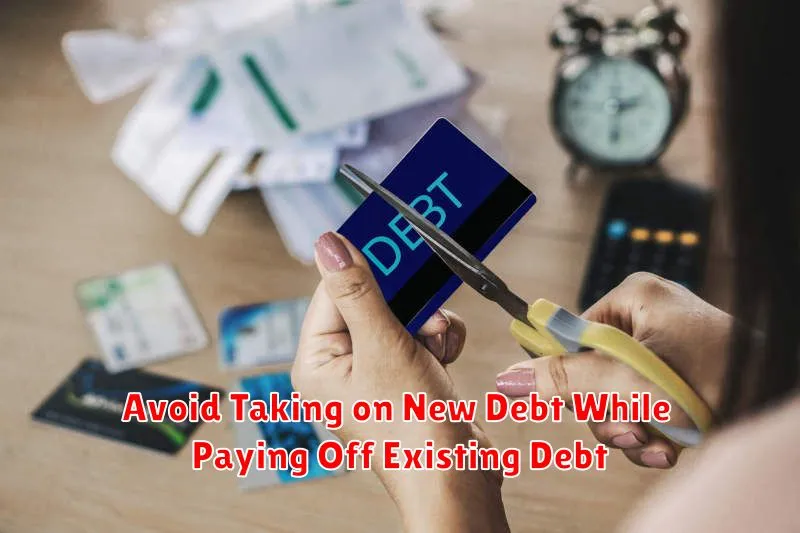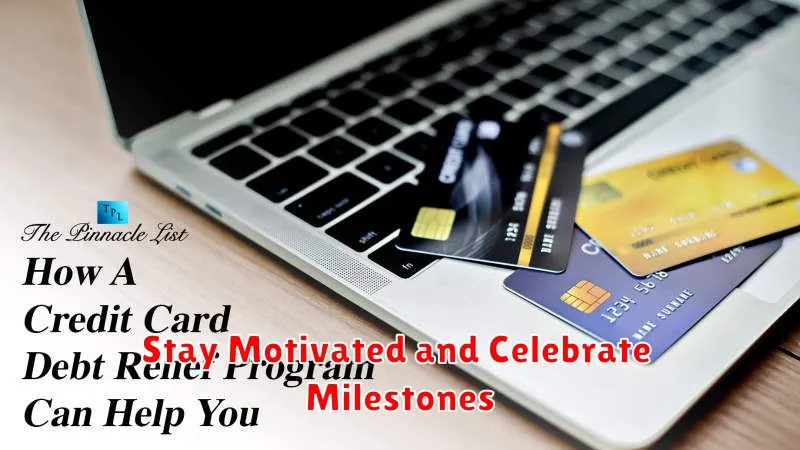Are you drowning in credit card debt? You’re not alone. Millions of Americans struggle with high credit card balances, and it can feel like an impossible mountain to climb. But don’t despair! There are effective strategies you can use to get your finances back on track and finally break free from debt.
In this article, we’ll explore proven methods for reducing your credit card debt. We’ll cover everything from budgeting and debt consolidation to negotiating with creditors and building better spending habits. Whether you’re just starting to tackle your debt or looking for new ways to accelerate your progress, this guide will provide you with the knowledge and tools you need to achieve financial freedom.
Understand Your Current Debt Situation
Before you can start tackling your credit card debt, you need to understand exactly what you’re dealing with. This means taking stock of all your outstanding balances, interest rates, and minimum payments. You can do this by gathering all your credit card statements and creating a spreadsheet or using a debt management tool.
Once you have a clear picture of your debt, you can start to prioritize which cards you want to pay off first. It’s generally a good idea to focus on cards with the highest interest rates first, as these will cost you the most in the long run.
You can also consider the following:
- Minimum Payments: Make sure you are aware of the minimum payments due on each card and how much you can afford to pay beyond the minimums.
- Due Dates: Keep track of your due dates to avoid late fees and damage to your credit score.
- Balance Transfers: If you have good credit, you may be able to transfer your balances to a card with a lower interest rate. However, make sure you understand the terms of any balance transfer offers, including any transfer fees or introductory periods.
By understanding your current debt situation, you can make informed decisions about how to best manage and reduce your credit card debt. This knowledge is the first step towards taking control of your finances and achieving financial freedom.
Create a Budget to Track Income and Expenses
Creating a budget is an essential first step in reducing credit card debt. It allows you to understand where your money is going and identify areas where you can cut back. By tracking your income and expenses, you can gain a clear picture of your financial situation and make informed decisions about your spending.
To create a budget, start by listing all your monthly income sources, including your salary, any part-time jobs, and any other regular income. Then, list all your monthly expenses, including housing, utilities, transportation, food, entertainment, and debt payments.
There are various budgeting methods you can use, such as the 50/30/20 method, the zero-based budgeting method, or the envelope method. You can use a spreadsheet, a budgeting app, or a simple notebook to track your income and expenses.
Once you have a clear understanding of your income and expenses, you can start identifying areas where you can reduce your spending. This could involve cutting back on unnecessary expenses, finding cheaper alternatives, or negotiating lower rates with your service providers.
By creating and sticking to a budget, you can take control of your finances and make significant progress towards reducing your credit card debt.
Identify and Cut Unnecessary Spending
One of the most effective ways to reduce credit card debt is to identify and cut unnecessary spending. This means taking a hard look at your budget and figuring out where your money is going. You may be surprised to find that you’re spending money on things you don’t really need or want.
To help you identify areas where you can cut back, consider these steps:
- Track your spending for a month. This will give you a clear picture of where your money is going. You can use a budgeting app, a spreadsheet, or even just a notebook.
- Review your subscriptions. Are you paying for streaming services, gym memberships, or other subscriptions that you don’t use regularly? Consider canceling or downgrading these subscriptions.
- Look for ways to save on your bills. Can you negotiate lower rates for your cell phone, internet, or cable bill? Can you find cheaper alternatives for your utilities?
- Cut back on dining out. Eating out is a major expense for many people. Try cooking at home more often, or look for deals and discounts at restaurants.
- Reduce impulse purchases. If you tend to make impulse purchases, try to avoid shopping when you’re stressed or bored. Set a budget for yourself and stick to it.
By identifying and cutting unnecessary spending, you can free up more money to pay down your credit card debt. This can help you get out of debt faster and save money on interest charges.
Prioritize Debt Repayment (Snowball or Avalanche Method)
Once you’ve created a budget and are tracking your spending, the next step is to prioritize your debt repayment. The most popular methods are the snowball method and the avalanche method.
The snowball method focuses on paying off the smallest debt first. This can be motivating, as you see progress quickly. You pay the minimum payments on all your debts and throw any extra money you have at the smallest balance. Once you’ve paid off that debt, you roll the payment amount from that debt into the next smallest debt, and so on.
The avalanche method focuses on paying off the debt with the highest interest rate first. This is the most mathematically sound approach, as it will save you the most money in the long run. You pay the minimum payments on all your debts and throw any extra money you have at the debt with the highest interest rate. Once you’ve paid off that debt, you move on to the next highest interest rate debt, and so on.
Both the snowball method and the avalanche method are effective ways to pay off debt. The best method for you will depend on your personal preferences and financial situation.
Negotiate Lower Interest Rates with Credit Card Issuers
Negotiating a lower interest rate on your credit card can be a powerful way to save money and accelerate your debt repayment. While not always successful, it’s definitely worth trying. Here’s how to approach it:
1. Know Your Credit Score: Your credit score is a key factor in determining your interest rate. Check your score and understand where you stand. A higher score gives you more leverage in negotiations.
2. Research and Compare: Before approaching your issuer, research other credit cards and their interest rates. This will help you make a compelling case for a lower rate.
3. Timing Matters: Consider contacting your issuer when you’re close to your credit limit or during promotional periods, as they might be more open to negotiation.
4. Be Prepared to Switch: If you don’t get the desired rate, be ready to switch to a new credit card with a lower interest rate. This can be a strong bargaining chip.
5. Be Polite and Persistent: When contacting your issuer, be polite and professional. Explain your situation clearly and emphasize your good payment history. If your first attempt is unsuccessful, don’t give up; try again later.
6. Consider a Balance Transfer: If a lower interest rate isn’t available, a balance transfer to a card with a 0% introductory APR can help you save money.
While negotiating a lower interest rate isn’t a guaranteed solution, it’s a worthwhile effort to explore. With a strategic approach and a bit of persistence, you might be able to significantly reduce your credit card debt.
Explore Debt Consolidation Options
Debt consolidation can be a helpful strategy for managing multiple credit card debts. It involves combining several outstanding balances into a single loan, typically with a lower interest rate. This can simplify your repayment process and potentially save you money on interest charges.
Here are some common debt consolidation options:
- Balance Transfer Credit Cards: These cards offer a temporary introductory 0% APR period, allowing you to transfer balances from other cards and avoid interest charges for a certain timeframe. Once the promotional period ends, a standard APR will apply.
- Personal Loans: Obtaining a personal loan from a bank or credit union can consolidate your debt into a single, fixed-rate loan with a potentially lower interest rate than your credit cards.
- Debt Consolidation Loans: Similar to personal loans, these loans are specifically designed for debt consolidation. They may offer competitive interest rates and flexible repayment terms.
Before considering debt consolidation, it’s essential to:
- Compare interest rates and fees from different lenders.
- Assess the terms and conditions of each loan option, including repayment periods and potential penalties.
- Consider your credit score and debt-to-income ratio, as these factors can affect loan eligibility and interest rates.
Debt consolidation can be an effective strategy for reducing credit card debt, but it’s crucial to carefully evaluate your options and ensure it’s the right choice for your financial situation. Consult with a financial advisor for personalized guidance and explore all available resources before making a decision.
Consider a Balance Transfer Credit Card
A balance transfer credit card is a great way to reduce your credit card debt if you have a high interest rate. These cards offer a promotional period, usually between 12 and 18 months, during which you can transfer your balance from another credit card to the new card and pay 0% interest. This allows you to save money on interest charges and pay off your debt faster.
Before you apply for a balance transfer credit card, make sure you understand the terms and conditions. Some cards charge a balance transfer fee, which can range from 3% to 5% of the amount transferred. You should also check the APR that will apply after the promotional period ends. If you don’t pay off the entire balance by the time the promotional period expires, you’ll be charged interest at the regular APR, which can be quite high.
If you decide to get a balance transfer credit card, make sure you use it responsibly. Avoid making new purchases on the card and focus on paying down your balance as quickly as possible. By following these tips, you can take advantage of a balance transfer credit card to reduce your credit card debt and improve your financial situation.
Make More Than the Minimum Payment
The minimum payment on your credit card is the lowest amount you can pay each month and still remain in good standing with your lender. However, making only the minimum payment will keep you in debt for a very long time and cost you a lot of money in interest. It’s best to make more than the minimum payment whenever possible to reduce your debt faster and save money in the long run.
Even an extra $20 or $30 per month can make a big difference. To see how much you could save by increasing your payments, use a credit card debt calculator. This online tool can help you figure out how much faster you can pay off your debt and how much interest you can save by making larger payments.
Here are a few tips for making more than the minimum payment:
- Set up automatic payments from your checking account.
- Round up your payments to the nearest $50 or $100.
- Make extra payments whenever you can, such as when you receive a bonus or tax refund.
By making more than the minimum payment, you can take control of your credit card debt and get out of debt faster. You’ll be able to save money on interest and reach your financial goals sooner.
Seek Professional Financial Advice
When dealing with significant credit card debt, seeking professional financial advice can be an invaluable step towards financial stability. Certified financial planners (CFPs) or other qualified financial advisors can provide tailored guidance and strategies specific to your situation. They can help you create a realistic budget, explore debt consolidation options, and negotiate with creditors for lower interest rates or payment plans. Their expertise can empower you to make informed decisions and navigate the complexities of credit card debt reduction.
Set Realistic Goals and Track Your Progress

When tackling credit card debt, it’s crucial to set realistic goals and track your progress to stay motivated and on track. Don’t aim for impossible reductions; instead, focus on achievable targets that you can sustain over time. For example, try setting a goal of reducing your debt by $100 per month. This may seem small, but it will add up significantly over time.
To track your progress, consider using a budgeting app or a spreadsheet. Monitoring your spending, debt payments, and overall balance will help you see the tangible results of your efforts and stay motivated. As you make progress towards your goals, you can celebrate small milestones and adjust your targets as needed. This helps you stay engaged and avoid feeling overwhelmed.
Build an Emergency Fund to Avoid Further Debt

One of the best ways to prevent further credit card debt is to build an emergency fund. When you have an emergency fund, you can avoid using credit cards to cover unexpected expenses. This will help you stay on track with your debt repayment plan and avoid adding to your debt.
Aim to save 3-6 months of living expenses in your emergency fund. This may seem like a lot, but it will give you a safety net to cover things like medical bills, car repairs, or job loss. You can start small by setting aside a little money each month. As you reach your savings goals, you’ll gain peace of mind knowing you have a financial cushion to protect you from unexpected events.
You can create a budget to make sure you have enough money to contribute to your emergency fund each month. It’s also important to track your spending, to identify areas where you can cut back. When you have a healthy emergency fund, you’ll be less likely to rely on credit cards for unexpected expenses, allowing you to prioritize paying down existing debt.
Avoid Taking on New Debt While Paying Off Existing Debt

One of the most crucial steps in tackling credit card debt is to avoid taking on new debt. This might seem obvious, but it’s surprisingly easy to slip back into spending habits that contribute to your debt. While you’re focusing on paying off your existing balances, it’s essential to resist the urge to make new purchases with your credit cards.
Here are some tips to help you stay debt-free:
- Create a budget: A budget can help you track your income and expenses, so you can identify areas where you can cut back. This can prevent impulsive spending and ensure you have enough money to allocate towards debt repayment.
- Limit your credit card use: Instead of relying on your credit cards for everyday purchases, use cash or debit cards. This will prevent you from accumulating more debt and can help you become more mindful of your spending habits.
- Cancel or freeze your credit cards: If you find yourself tempted to use your credit cards, consider cancelling them or freezing your accounts. This can prevent you from making new purchases and help you break the cycle of debt.
- Consider a debt consolidation loan: If you have multiple credit card balances, a debt consolidation loan can help you simplify your debt payments and potentially lower your interest rate. However, make sure to choose a loan with a lower interest rate and repayment terms that you can comfortably meet.
By focusing on avoiding new debt, you’ll be able to dedicate all your resources towards paying off your existing debt and achieve financial freedom sooner.
Stay Motivated and Celebrate Milestones

Reducing credit card debt can be a long and challenging journey. It’s easy to feel overwhelmed and discouraged, especially when you don’t see immediate results. To stay motivated, it’s essential to celebrate your milestones along the way. Each small step you take towards your goal deserves recognition and appreciation. This positive reinforcement will keep you on track and help you maintain momentum.
Instead of solely focusing on the amount of debt you still owe, shift your perspective and acknowledge the progress you’ve made. Celebrate each debt payment, whether it’s a large sum or a small amount. Consider rewarding yourself with non-financial treats, such as a night out with friends, a movie night at home, or a new book. Remember, every step forward brings you closer to your financial freedom.
Tracking your progress visually can also be incredibly motivating. Consider using a debt tracker or a spreadsheet to visualize your debt reduction journey. You can see the balance decrease over time, which can be a powerful motivator. Seeing your progress tangibly reinforces your commitment and reminds you of the positive impact you’re making.

